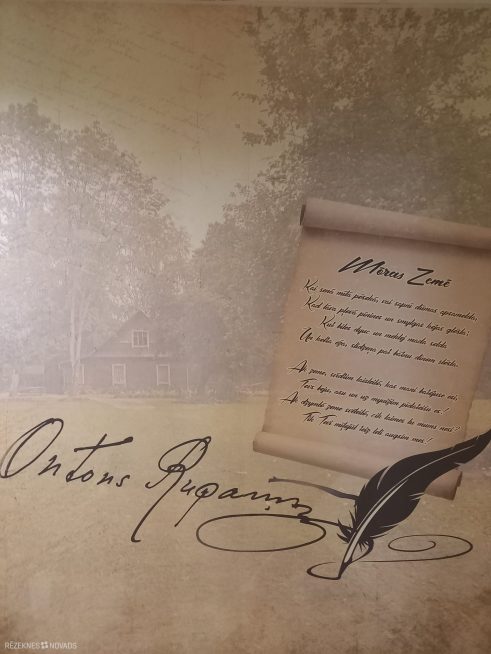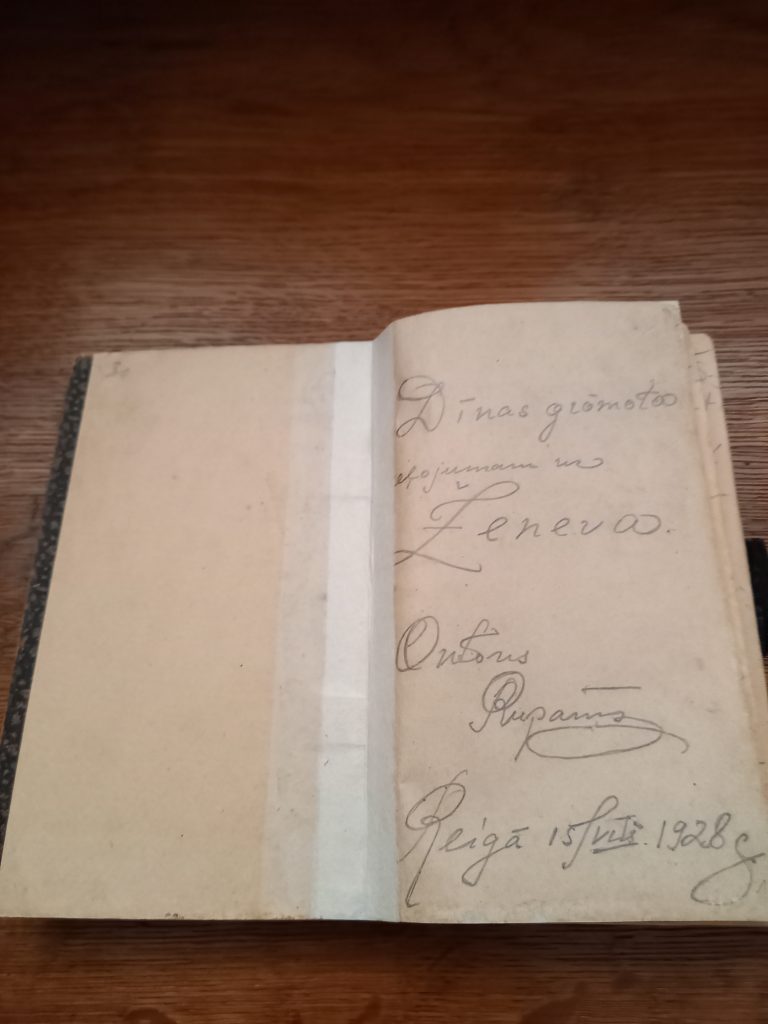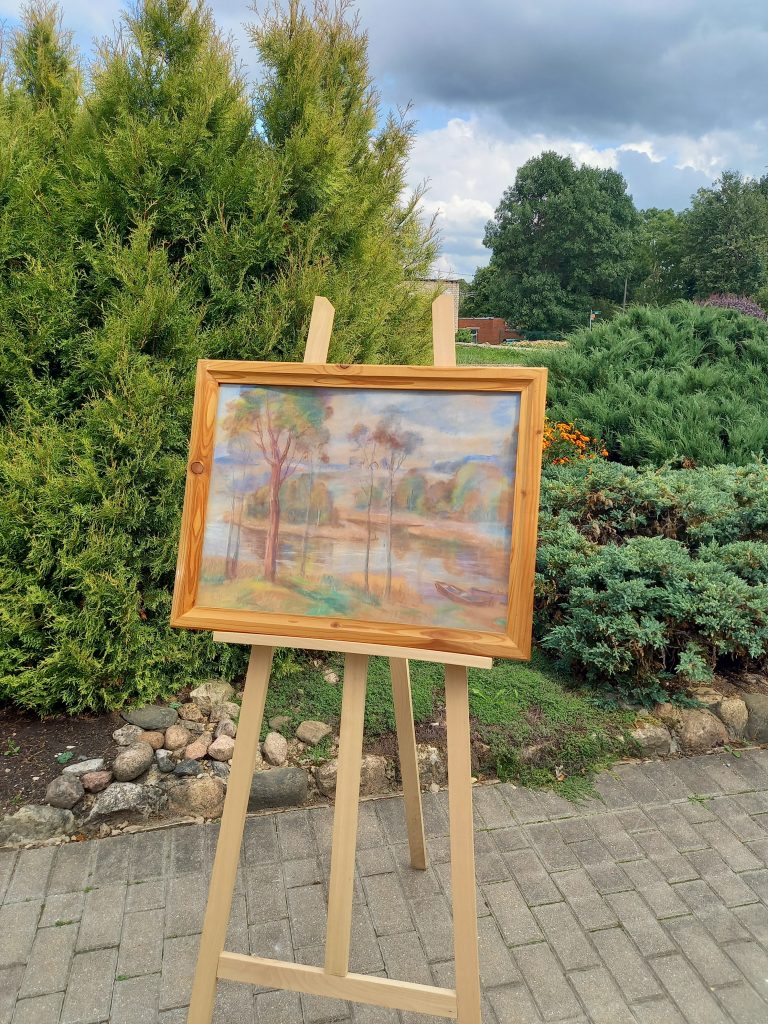Waiting for Anton Rupains's 115 th anniversary

This year is 115 years since Anton Rupainis was born, a writer, a conductor, a teacher. A vivid writer's personality has been described by John Kapamer: “Anton Rupainis has been the first of his own writers who have entered Latgale's modern writing garden with the content and form of his work. With the versatility of his talent, he has been the most gifted of all Latgale writers. His eternal part will continue to live wherever he is spoken, read and thought in Latvian.
His literary heritage is carefully kept IN Bērzgales parish in Anton Rupaja Museum. In 2019, we have received an ambitious writer archive, which includes a wide range of manuscripts, lists of writers with exile book publishers and literates, relatives and friends, and a rich range of photographs in the archives received. Among the materials received is the fragments of the unpublished novel “last throne”, the manuscript fragments of the unfinished novel “Rēzekne rekviem”. Interesting is the writer's research notes on white tribes and the origin of the white language that are later used to write the study “Archeolingvistik” on the origin of ancient languages and the kinship of peoples, the role of Dinos in the ancient languages. In turn, photographs and postcards reflect A. Ruth's progress in Latvia and the emigration. Rich is a photograph material related to the Farmers 6-Clan elementary school, where the writer worked as a teacher with literature and writer Staponu Saili. The photographs also provide an insight into the emigration period in Bavaria in the camp of Neuotting, where the writer led the Latvian national school.
With the support of the writer's anniversary, one of the most ambitious handwriting of Anton Rupains has been restored with the support of the State Culture Capital Fund “Dashed travel to Geneva”, which gives an insight into the impact of travel and knowledge sin the tarpal teacher congress and peace propaganda courses in Geneva, the people of the Union.
There is also an innovation in the museum exhibition to feel the writer's presence and the hometown “Puric” atmosphere. When entering the museum, the visitor looks forward to the home writer's autograph, taken from a manuscript, and the fragments from the poem in the “Mōra Land”, which is published in the newspaper “Latgale release 15 years”, 1920 –1935. "
On 13 September, the writer's birthday, IN Bērzgales graves, a memorial will take place, but the cultural house will be a great opportunity to look at Anton's peel cycle. ”Anton Rupains' land, which was dedicated by the poet and artist Anton Kokoy to Anton Ruth's native side and has painted the most important historical objects that the writer has described in his memories and literary works. It is said to be the apvītais mountain of Kirk and the Lake Micane, THE Bērzgales and the Red Church, THE Bērzgales manor, the Puric, the Farmers and Rezekne.
As you say every year, there will be an opportunity to watch the film “time and myriad roksts”., who talks about the writer's life and his literary activity in his homeland and emigration.
When we start the new school year, we have also prepared a new museum pedagogical program “Let's play a theatre!i ', that is closely related to Antonu Rupaini and his beauty. During the course of this programme, it will be possible to look at the theatre playing traditions in Berzgale from THE times OF A. Rupains to today, as well as to co-operate (the development of the museum pedagogical programme will take place in accordance with the guidelines for epidemiological security measures in museums).
September is also a month of poetry. Anton Rupainis has started his literary activity with poetry, the first published poem, “Mōmanneits”, comes out in 1927 in the magazine “Solomon”. Continuing the traditions of poetry, the pupils and parish residents are invited to write their favorite fragment of Rainey's poetry and collect a poetry day in the canvas that will be located IN THE territory of THE main school footer OF Bērzgales.
The versatile activity of the writer has made a major contribution to Latgale and Latvia's literary and public life, which IS stored, investigated and reflected by the Museum of Anton Rupains IN Bērzgales parish. In the memories of Latgale song festival in Daugavpils in 1940, where the writer is active in the songs festival action and programme commissions, the work has been said: “I was pleased that the sweat was good.” And now, looking at Latvia's time with a 30-year gap, it seems that cutting the bicycle along the wrinkled roads was in its own way the cutting of Latgale cultural history. It was an unspecified share, but the main mission of my life. '
A. Rwanda museum manager Skaidrite Apeinne

